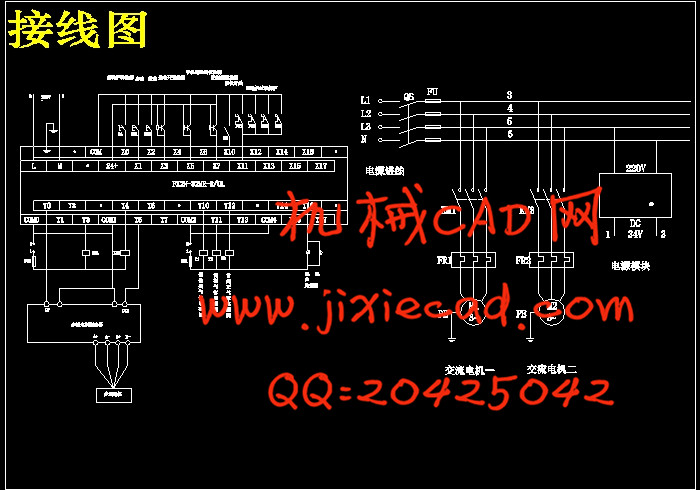设计简介
手机电池贴标机
摘要:贴标机是一种自动化程度高、复杂系数大的机电一体化产品,主要用于化妆品,保健品、日用品、食品和电池等行业的包装。由于贴标机较为复杂,制造难度大,目前这方面的需求大多依赖进口,而国外贴标机的价格十分昂贵,很难被我国市场所接受。本文研究和开发一种自动化程度高,结构简单,操作可靠的手机电池自动贴标机具有重要的实际价值。本文以研究和开发全自动的贴标机为目标,主要完成的工作有:1、对手机电池的贴标工艺做了深入研究,完成了贴标机的控制系统部分设计,应用三菱公司的FX2N-32MR-E/UL系列 PLC 实现电气部分设计和控制程序的实现。
2、为了实现贴标机高精度的性能,本文改进了普通两相混合式步进电机的闭环控制方法
3、绘制电路连接图,编写PLC控制程序。
关键词:自动贴标机,可编程控制器,串口通信
Mobile phone battery labeling machine
Abstract:Labeling machine is a high degree of automation, complex factor is big electromechanical integration products, mainly used for cosmetics, health care products, daily necessities, food and battery industries of packing. Because labeling machines is relatively complex, manufacturing is difficult, at present the most demand dependence on imports, and foreign labeling machines price is very expensive and difficult to China's market place is accepted. This paper research and development and a high degree of automation, simple structure, reliable operation of the cell phone battery to be automatic labeling machine has important practical value. Based on the research and development of the automatic labeling machines as the goal, the main completed work:
1. The labeling process on the wafer to do in-depth studies, completed the labelingmachine control system design, application of keyence’s FX2N-32MR-E/UL Series PLC to achieveelectrical design and control procedures can be achieved.
2. In order to achieve high precision performance labeling machine, the paper improved the ordinary two-phase hybrid stepping motor of the closed-loop control method.
3. Draw circuit connection diagram, writing PLC control procedures.
Key words: automatic labeling machines, programmable controller, serial
目 录
第1章 绪论 1
1.1贴标机的研究现状和发展趋势 1
1.2 PLC与其它工业控制系统的比较 2
1.3 PLC在全自动包装机上的应用 3
1.4本课题研究内容 4
第 2 章 贴标机的功能分析和总体设计 5
2.1手机电池贴标机的功能分析 5
2.2 系统整体方案设计 5
2.3本章小结 7
第 3 章 贴标机系统硬件的设计 8
3.1 下位机控制系统的选型 8
3.2 下位机控制系统的硬件配置 10
3.3系统主电路设计 13
3.4 PLC系统控制电路设计 16
3.3 本章小结 19
第 4 章 控制系统软件设计 20
4.1 下位机 PLC 程序的实现 20
4.2 通信程序的设计 22
4.3系统控制部分梯形图设计 27
第 5 章 结论与展望 32
5.1 全文总结 32
5.2 研究展望 32
致谢 34
参考文献 35



